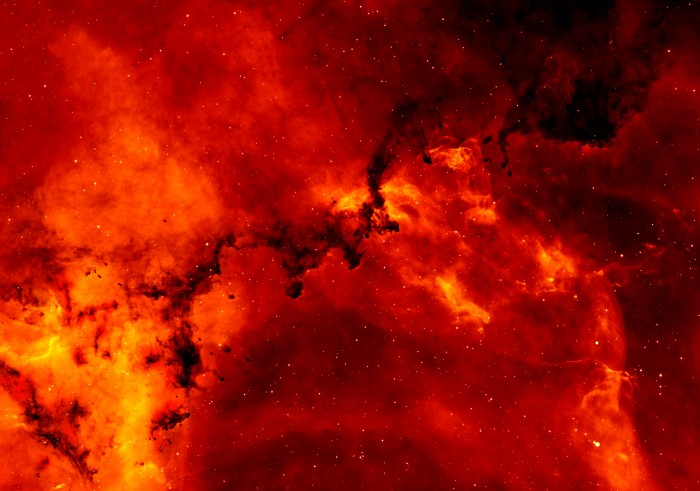APOD: 2005 December 23 - Hydrogen and Dust in the Rosette Nebula (original) (raw)
Astronomy Picture of the Day
Discover the cosmos!Each day a different image or photograph of our fascinating universe is featured, along with a brief explanation written by a professional astronomer.
Hydrogen and Dust in the Rosette Nebula
Credit: Nick Wright(University College London),IPHAS Collaboration
Explanation: At the edge of a largemolecular cloud in Monoceros, some 3,000 light years away, dark filaments of dust are silhouetted by luminoushydrogen gas. The close up view of theRosette Nebula dramatically suggests that star formation is an on going process in the region, with dark filamentssculptedby winds and radiation from hot, young stars. Ultraviolet radiation from the young stars also strips electronsfrom the surrounding hydrogen atoms. As electrons and atoms recombine they emit longer wavelength, lower energy light in a well knowncharacteristic pattern of bright spectral lines. At visible wavelengths, the strongest emission line in this pattern is in the red part of the spectrum and is known as "Hydrogen-alpha" or justH-alpha. Part of IPHAS, a survey of H-alpha emission in our Milky Way Galaxy, this image spans about 25 light-years.
Tomorrow's picture: Earthrise
<| Archive| Index| Search| Calendar| Glossary| Education| About APOD| Discuss| >
Authors & editors: Robert Nemiroff(MTU) &Jerry Bonnell(USRA)
NASA Web Site Statements, Warnings, and Disclaimers
NASA Official: Jay Norris.Specific rights apply.
A service of: EUD atNASA /GSFC
& Michigan Tech. U.
